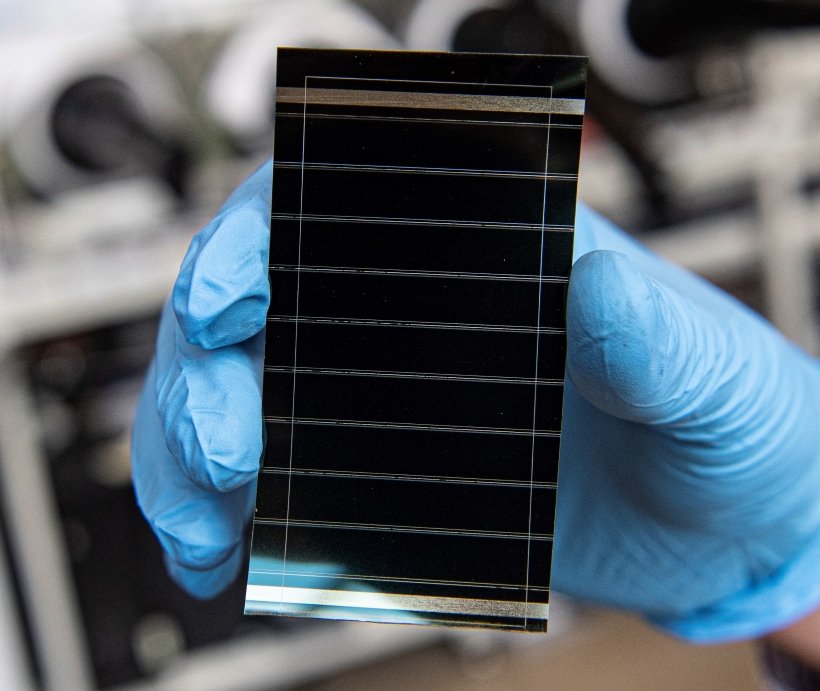In the race to find cleaner, more sustainable energy sources, solar power has taken center stage. With each passing year, solar technology evolves, pushing the boundaries of efficiency and affordability. One of the most exciting developments in this field is perovskite solar cells—innovative materials that promise to revolutionize the solar energy market. But what exactly are perovskite solar cells, and why are they generating so much buzz? In this blog, we’ll dive into the world of perovskite solar cells, explore how they work, their advantages and challenges, and what the future holds for this cutting-edge technology.
What Are Perovskite Solar Cells?
Perovskite solar cells are a type of photovoltaic device that converts sunlight into electricity, much like traditional solar panels. However, the key difference lies in the material used in the light-absorbing layer. Instead of relying on silicon, perovskite solar cells use a compound with a unique crystal structure known as “perovskite,” named after the mineral calcium titanium oxide (CaTiO₃).

The term “perovskite” has since evolved to refer to a broader class of materials sharing this crystal structure, typically involving a combination of organic compounds and metals like lead or tin. What makes these materials so exciting is their ability to absorb light more efficiently, which could lead to cheaper, more flexible, and more efficient solar panels.
How Do Perovskite Solar Cells Work?
Perovskite solar cells work similarly to other photovoltaic systems but with some notable differences. Here’s a simplified breakdown:
- Light Absorption: The perovskite layer absorbs sunlight and creates electron-hole pairs (pairs of negatively charged electrons and positively charged holes).
- Electron and Hole Transport: These electron-hole pairs are separated into free electrons and holes by different layers within the cell: an Electron Transport Layer (ETL) for electrons and a Hole Transport Layer (HTL) for holes. This separation prevents them from recombining and losing energy.
- Electricity Generation: The electrons flow towards the external circuit through one electrode, and the holes flow in the opposite direction towards another electrode. This movement creates an electric current, which is then harvested for power.
The magic of perovskite lies in its ability to efficiently absorb light and generate electricity, even in thin and flexible layers. This opens up a world of possibilities for applications beyond just rooftop panels, such as integrating solar power into buildings, devices, and even clothing!
Also read: Half-Cut vs. Full-Cut Solar Cells: Everything You Need to Know
Pros and Cons of Perovskite Solar Cells
Like any technology, perovskite solar cells come with their own set of strengths and challenges. Let’s break it down.
Pros:
- High Efficiency: Perovskite cells have made remarkable gains in efficiency over the past decade, with some laboratory tests showing power conversion efficiencies (PCE) of over 25%. This rivals and, in some cases, exceeds that of traditional silicon-based solar cells.
- Low Production Costs: Perovskites’ solution-based manufacturing process is more straightforward and potentially cheaper than the high-temperature processes required for silicon solar cells, making them a more cost-effective option.
- Flexibility and Lightweight: Perovskite solar cells can be produced on flexible substrates, making them ideal for portable electronics, wearable tech, and even integration into windows or building facades.
- Tunable Bandgap: By adjusting the composition of the perovskite material, scientists can tune the bandgap to absorb different parts of the solar spectrum, allowing for improved performance and even tandem cells that combine multiple layers for higher efficiency.
Cons:
- Stability Issues: One of the biggest hurdles for perovskite solar cells is their sensitivity to environmental factors like moisture, heat, and UV light. This can lead to degradation over time, making them less durable than traditional silicon cells.
- Lead Toxicity: Many high-efficiency perovskite solar cells use lead as a key component, raising environmental and health concerns. While researchers are working on developing lead-free alternatives, these versions currently have lower efficiency.
- Scalability: While the technology shows promise in lab settings, scaling up production to a commercial level while maintaining quality and uniformity is still a challenge.
Future Scope
The future of perovskite solar cells looks bright, thanks to ongoing research and innovation. Here’s what to expect in the coming years:
- Tandem Solar Cells: By combining perovskites with other materials (like silicon), researchers can create tandem cells that achieve even higher efficiencies by capturing more of the solar spectrum. This could push solar power generation to new heights.
- Commercial Viability: Companies like Oxford PV and Saule Technologies are leading the charge in bringing perovskite solar cells to the market. With advancements in encapsulation techniques (to improve stability) and scalable manufacturing processes (like roll-to-roll printing), we could see these cells in commercial products sooner than we think.
- New Applications: Perovskite solar cells’ flexibility and lightweight nature open up a wide range of new applications. From building-integrated photovoltaics (BIPV) to portable and wearable solar tech, perovskites could power everything from office windows to smartwatches.
- Eco-Friendly Solutions: Researchers are exploring lead-free alternatives and more sustainable production methods to make perovskite technology not just efficient, but also environmentally friendly. This could align with global sustainability goals, pushing perovskite solar cells to the forefront of the green energy movement.
Conclusion
Perovskite solar cells have come a long way from being a scientific curiosity to a potential game-changer in the renewable energy industry. With their high efficiency, low cost, and versatile applications, they represent a new frontier in solar technology. While challenges remain—particularly in terms of stability and toxicity—the rapid pace of research suggests that these hurdles are not insurmountable. As we continue to seek sustainable energy solutions, perovskite solar cells stand poised to illuminate a brighter, greener future for us all.


